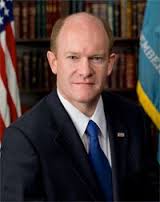Legislation has been re-introduced in Congress that would give investors in renewable energy projects access to a corporate structure currently only available for fossil fuel-based energy projects.
 The Master Limited Partnerships (MLP) Parity Act modifies the federal tax code by helping additional energy-generation and renewable fuels companies form master limited partnerships, which combine the funding advantages of corporations and the tax advantages of partnerships.
The Master Limited Partnerships (MLP) Parity Act modifies the federal tax code by helping additional energy-generation and renewable fuels companies form master limited partnerships, which combine the funding advantages of corporations and the tax advantages of partnerships.
“The bipartisan Master Limited Partnerships Parity Act levels the playing field to help clean and renewable energy projects compete fairly with traditional energy projects,” said bill co-sponsor Senator Chris Coons (D-Del.), a member of the Senate Energy and Natural Resources Committee. “This market-driven solution supports the all-of-the-above energy strategy we need to power our country for generations to come.”
In addition to Coons, the Senate bill is co-sponsored by Senators Jerry Moran (R-Kan.), Debbie Stabenow (D-Mich.) and Lisa Murkowski (R-Alaska). The MLP Parity Act was also introduced in the House on Wednesday by Reps. Ted Poe (R-TX-02), Mike Thompson (D-CA-05), Peter Welch (D-VT-AL) and Chris Gibson (R-NY-19).
 According to FaegreBD Consulting, an MLP is a publicly traded partnership that is largely measured by the predictability and sustainability of its cash flow. As a partnership, the MLP is not subject to taxation at the MLP or corporate level, but instead is taxed as a pass-through entity. As such, MLP cash flows are enhanced, and tax savings from this single level of taxation contribute to a cost of capital advantage over competitors organized or taxed as a corporation. In the late 1980’s, legislation was passed restricting the use of MLPs to the energy and natural resource industry, excluding renewable sources of energy. As a result, MLPs have been largely limited to the ownership and operation of midstream oil and gas assets such as pipelines and storage terminals, and more recently the exploration and production of oil, gas and coal.
According to FaegreBD Consulting, an MLP is a publicly traded partnership that is largely measured by the predictability and sustainability of its cash flow. As a partnership, the MLP is not subject to taxation at the MLP or corporate level, but instead is taxed as a pass-through entity. As such, MLP cash flows are enhanced, and tax savings from this single level of taxation contribute to a cost of capital advantage over competitors organized or taxed as a corporation. In the late 1980’s, legislation was passed restricting the use of MLPs to the energy and natural resource industry, excluding renewable sources of energy. As a result, MLPs have been largely limited to the ownership and operation of midstream oil and gas assets such as pipelines and storage terminals, and more recently the exploration and production of oil, gas and coal.

